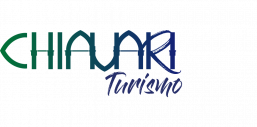Le port de plaisance est parfaitement intégré dans le réseau de la ville, à deux pas du centre ville, avec les rues riches non seulement d’activités commerciales, mais aussi de traditions historiques, culturelles et touristiques.
Le Port Touristique de Chiavari est aussi une base prestigieuse pour les plaisanciers dans le système touristique du Tigullio, à une courte distance des perles du tourisme nautique (Portofino, S.Margherita, Cinque Terre) et des destinations les plus fréquentées de Toscane, Sardaigne, Corse et Côte d’Azur.
La structure actuelle, qui accueille plus de 500 bateaux, a augmenté sa capacité avec un élargissement dénommé ‘Calata Ovest’, qui offre 151 emplacements ultérieurs de 8 et 24 mt ; on y trouve, en outre, 107 places de parking et 80 garages couverts pour les voitures, offrant tous les services les plus modernes liés à l’utilisation et à l’entretien de son propre bateau.
Des travaux de décoration urbaine, d’amélioration des accès au port et à la plage, de renforcement des services hygiéniques et du nouveau système de distribution de carburant ont été réalisés.
On peut également parcourir la promenade panoramique qui relie le bord de mer avec le nouvel aire du Port touristique.
Le Port Touristique de Chiavari et les activités pour les plaisanciers sont gérés par la Società Marina Chiavari.
La Promenade sur le bord de mer donne sur le Port Touristique de Chiavari et s’étend sur environ 2 km en longeant les plages. Les plages sont fréquentées pendant la saison estivale et l’on peut jouir d’établissements balnéaires, d’espaces équipés mais aussi de plages libres. Des aires de baignade sont spécialement prévus et réservés aux chiens.
Les rochers (‘pennelli’) près du littoral permettent un accès sûr surtout aux familles et aux enfants.
Tout au long de la promenade on trouve des magasins, des restaurants, des cafés, des glaciers et des espaces libres et ludiques pour tout âge, pour vivre au mieux en plein air en toute saison.
















